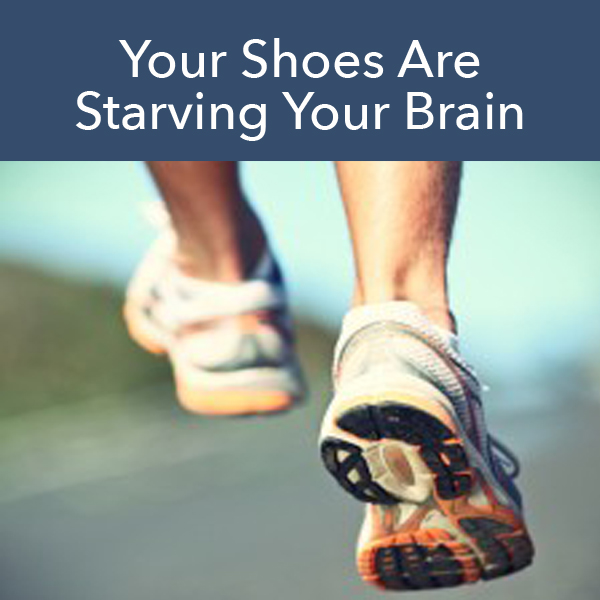This post is for the neuro nerds. My bio buds. The manual therapists, the weekend warriors and the supple leopards. It’s also for the moms and dads, and the generation they are charged with raising.
This post is about proprioception. And it’s for all of us.
Proprio-what???
I am going to use the term ‘proprioception’ loosely in this post. Normally, we use it to simply talk about our own awareness of body position. Here, I’ll lump it in with other sensory information as an all-encompassing way to describe the combination of impulses directed from the body to the brain via the nervous system. It can be from neurons, mechanoreceptors, proprioceptors, golgi tendon organs, muscle spindles, Pacinian corpuscles and tons of other things most people don’t care about.
But I care about them. Because they are essential to life. And most of us are stifling the message.
So here goes (if you’re still with me). Our body is littered with sensory neurons and organs that send signals to the brain for interpretation. Proprioception is mediated in the cerebellum (the hindbrain). Other sensory information is computed in the cortical region of the brain. Here, a physical representation has been created to depict the density of sensors in parts of the body. It’s called the sensory homunculous, which means ‘creepy little dude.’ (See picture below)
 You see that the lips and hands are huge because they are the most sensitive parts of our bodies, and thus have the most dense innervation allotted to them.
You see that the lips and hands are huge because they are the most sensitive parts of our bodies, and thus have the most dense innervation allotted to them.
But I left out another big one. Our feet!
Yes, our feet are packed with sensory neurons and proprioceptors and are supposed to give our brains tons of feedback about the nature of our environment. I say ‘suppose to’ because everyone is suppressing this important feedback with fashionable functional casts shoes.
Yes, your shoes are killing you. Or at the very least decreasing the quality of your life and health. Killing sounds more compelling though.
One of my favorite authors, Dr. James Chestnut likes to talk about proprioception as an essential ‘nutrient’ for your brain. Think about all of the childhood behavioral and brain disorders. ADD/ADHD for example is partly a sensory input disorder. The brain isn’t getting sufficient feedback from its environment and thus ‘asks’ for more. More movement, more activity, more stimulation, more nutrients. And yet we have a society that puts shoes on our kids, has them sit in tidy lines in class all day and wonders why so many kids are struggling. And yes the food is partly to blame. But this post is all about movement and proprioception.
The Hard-Level Floor Theory
From an ancestral health perspective, this all makes a lot of sense. Back in the day, we would spend a lot of time moving about the ground, connected to the earth. Mark Sisson talks a lot about this in his book The Primal Connection. We would have been on uneven surfaces and naturally had strong feet and tons of sensory input from our feet to our brains. Nowadays, we must make a conscious effort to get off of hard-level floors and out of shoes to feed our brain the proprioceptive nourishment it requires. Could the modern trend of something as common as shoes be contributing to neurological disorders such as Alzheimer’s, dementia, Parkinson’s, depression, ADD, etc?
What to do?
We can’t very well go around barefoot all day. It’s true; our society is setup to dissuade a full complement of sensory feedback from our feet. Translation: no shirt, no shoes, no service!
Below is what I recommend to patients and what I have personally done. Not only will you help nourish the brain, these strategies can help to alleviate plantar fasciitis, shin splints, IT Band syndrome, patellar tendonitis and chronic ankle sprains.
1. Whenever possible, take off your shoes and walk around on the grass.
2. Daily “Foot drills.” These are simple exercises to strengthen and rehab the foot muscles. (see video below – skip to 6:33 to see the foot drills)
3. Gradually shift all footwear to “barefoot” or “minimalist” style. When functional training, I’ve opted for Inov-8’s 235’s or Strike Movement Chill Pill Transit , which are less restricting and give more foot feedback than a full-blown lifting shoe. Depending on your level of involvement, pick something that will protect, but also create a more ‘natural’ environment.
4. While I also wear my Strike Movements Chill Pills to work, if you need something a little more dressy, I find a minimalist flat from Vivobarefoot is usually ‘dressy’ enough to get by.
(For more detail in shoe selection, please watch this video!)
I wouldn’t recommend doing all of this all at once. It takes time to strengthen the foot enough to transition safely back to our original nature. Especially if you’re a runner. DO NOT simply take of your shoes and pound the pavement. Go slow and steady to build up your innate foot strength and proprioception.
After all, we’ve been in walking casts most of our lives.
Yours in Health,
Dr. Scott
I’d love to give you my free report “Why Stretching Your Hamstrings Isn’t Working and What to Do Instead) as well as a subscriber only coupon for $10 off my video rehab program – The Full Body Fix.
Last modified: June 17, 2018



 I'm Dr. Scott A. Mills and I'm a chiropractor in San Francisco who creates resources for athletes and everyday people to eliminate pain and improve the way you move.
I'm Dr. Scott A. Mills and I'm a chiropractor in San Francisco who creates resources for athletes and everyday people to eliminate pain and improve the way you move.
One Response to :
Your Shoes Are Starving Your Brain
Comments are closed.